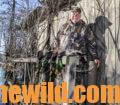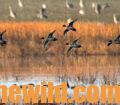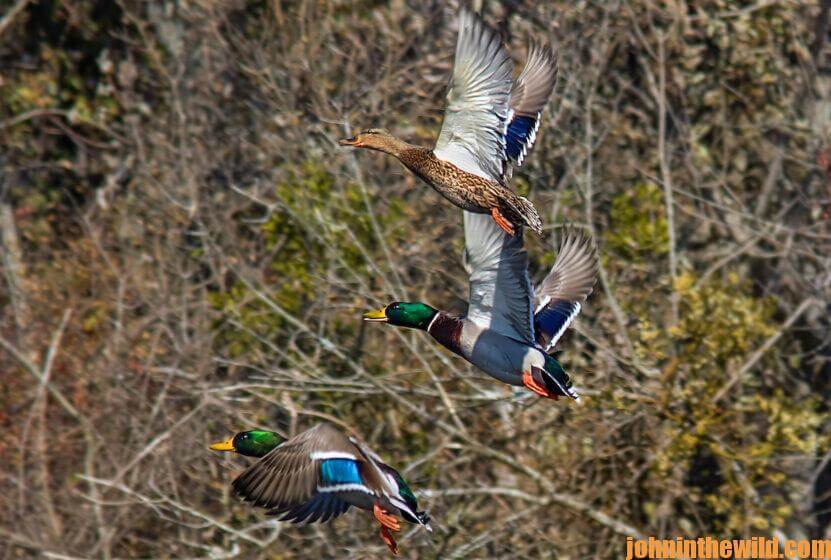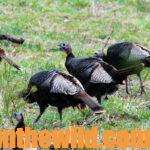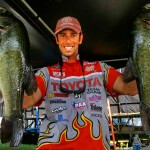Editor’s Note: Ducks have come to Beaver Dam on a 1,500-acre oxbow lake, south of Memphis, Tennessee, near Dundee and Tunica, Mississippi, 38 miles from the Mississippi River for eons. But harvesting ducks isn’t the only reason hunters flock there. More importantly, a trip to Beaver Dam is a step back into waterfowling history that enables you to go home with memories that last forever. Today, a portion of this lake is privately owned by Mike and Lamar Boyd and surrounded by corn, soybean and rice fields that draw in ducks. It’s historically been a great place to catch crappie and bass too with its 1-1/4 miles of open lake surrounded by standing cypress trees and cypress swamps on both ends of the lake. (All Live Waterfowl Photos Courtesy of George Lee Photography)
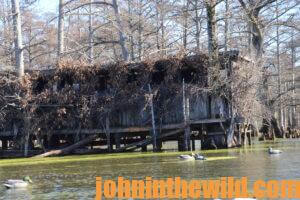 “Back in the early 1980s, I shot a mallard that had been banded near Tugaske, Saskatchewan, Canada,” Mike Boyd of Beaver Dam says. “Six years later, I took another banded green head mallard in the same blind that was banded by the same man, in the same place, in the same year as the first duck I’d harvested from Saskatchewan. I don’t think that that was just a coincidence. I think numbers of ducks from Saskatchewan come down the flyway to Beaver Dam every year. So, that’s led me to believe that ducks raised in certain spots use the same places to feed and rest as they come down the flyway year after year. I believe there’s a certain group of ducks that are more or less imprinted, somehow, with a map that directs them to Beaver Dam.
“Back in the early 1980s, I shot a mallard that had been banded near Tugaske, Saskatchewan, Canada,” Mike Boyd of Beaver Dam says. “Six years later, I took another banded green head mallard in the same blind that was banded by the same man, in the same place, in the same year as the first duck I’d harvested from Saskatchewan. I don’t think that that was just a coincidence. I think numbers of ducks from Saskatchewan come down the flyway to Beaver Dam every year. So, that’s led me to believe that ducks raised in certain spots use the same places to feed and rest as they come down the flyway year after year. I believe there’s a certain group of ducks that are more or less imprinted, somehow, with a map that directs them to Beaver Dam.
 “In the last 10 years, we’ve seen somewhat of a dramatic change in our goose population. We’ve had snow geese for years and years come to Beaver Dam. However, in the last 10 years, we’ve noticed a dramatic increase in the number of specklebellies (white-fronted geese) that have started using Beaver Dam to feed and rest as they come down the flyway. We now have huntable populations of specklebellies every year. Another change in the waterfowl we hunt is that in about 2011, our primary duck was the gadwall. But when the Midwest flooded with water everywhere, that winter our gadwalls didn’t show up here at Beaver Dam. Before then, 70% of the ducks we would take would be gadwalls with the rest teals, mallards, wigeons and wood ducks. When the gadwalls didn’t show up in 2011, large numbers of mallards started showing-up. Today we probably harvest 70% mallards with the rest being gadwalls, teals, wigeons and wood ducks.
“In the last 10 years, we’ve seen somewhat of a dramatic change in our goose population. We’ve had snow geese for years and years come to Beaver Dam. However, in the last 10 years, we’ve noticed a dramatic increase in the number of specklebellies (white-fronted geese) that have started using Beaver Dam to feed and rest as they come down the flyway. We now have huntable populations of specklebellies every year. Another change in the waterfowl we hunt is that in about 2011, our primary duck was the gadwall. But when the Midwest flooded with water everywhere, that winter our gadwalls didn’t show up here at Beaver Dam. Before then, 70% of the ducks we would take would be gadwalls with the rest teals, mallards, wigeons and wood ducks. When the gadwalls didn’t show up in 2011, large numbers of mallards started showing-up. Today we probably harvest 70% mallards with the rest being gadwalls, teals, wigeons and wood ducks.
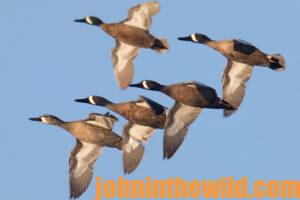 “When the mallards began coming in, we heard from the Midwest that that area was having tons of gadwalls come there, but that they hadn’t had that many gadwalls in the past. So, I don’t know if our gadwalls moved west that year or what. I think those tremendous floods in Kansas and Missouri may have been the reason those gadwalls pulled to the Midwest, and mallards became our dominant bird here at Beaver Dam.”
“When the mallards began coming in, we heard from the Midwest that that area was having tons of gadwalls come there, but that they hadn’t had that many gadwalls in the past. So, I don’t know if our gadwalls moved west that year or what. I think those tremendous floods in Kansas and Missouri may have been the reason those gadwalls pulled to the Midwest, and mallards became our dominant bird here at Beaver Dam.”
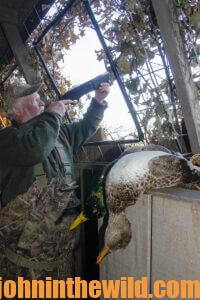 To learn more, you can visit the Boyds’ website at https://www.beaverdamducks.com/; call Mike Boyd at 662-363-6288 or email him at bbrdam@gmail.com; or, call Lamar Boyd at 662-910-0102 or email him at beaverdamducks@gmail.com.
To learn more, you can visit the Boyds’ website at https://www.beaverdamducks.com/; call Mike Boyd at 662-363-6288 or email him at bbrdam@gmail.com; or, call Lamar Boyd at 662-910-0102 or email him at beaverdamducks@gmail.com.
 For more information about John E. Phillips’ hunting books, visit www.amazon.com/author/johnephillips. To learn more about hunting deer, check out John E. Phillips’ book, “How to Hunt Deer Up Close: With Bows, Rifles, Muzzleloaders and Crossbows” (http://amzn.to/11dJRu8). You may have to copy and paste this link into your browser. (When you click on this book, notice on the left where Amazon says you can read 10% of the book for free, and you can hear 10% for free). On the right side of the page and below the offer for a free Audible trial, you can click on Buy the Audible book. Go to
For more information about John E. Phillips’ hunting books, visit www.amazon.com/author/johnephillips. To learn more about hunting deer, check out John E. Phillips’ book, “How to Hunt Deer Up Close: With Bows, Rifles, Muzzleloaders and Crossbows” (http://amzn.to/11dJRu8). You may have to copy and paste this link into your browser. (When you click on this book, notice on the left where Amazon says you can read 10% of the book for free, and you can hear 10% for free). On the right side of the page and below the offer for a free Audible trial, you can click on Buy the Audible book. Go to
https://www.amazon.com/gp/product/B00AN7GDW4/ref=dbs_a_def_rwt_bibl_vppi_i47 to learn about John and Denise Phillips’ cookbook, available in Kindle and print, “The Best Wild Game and Seafood Cookbook” that includes an entire chapter on bird recipes, including recipes for their favorite duck dishes.
Tomorrow: How to Read Ducks

